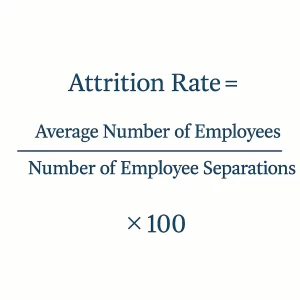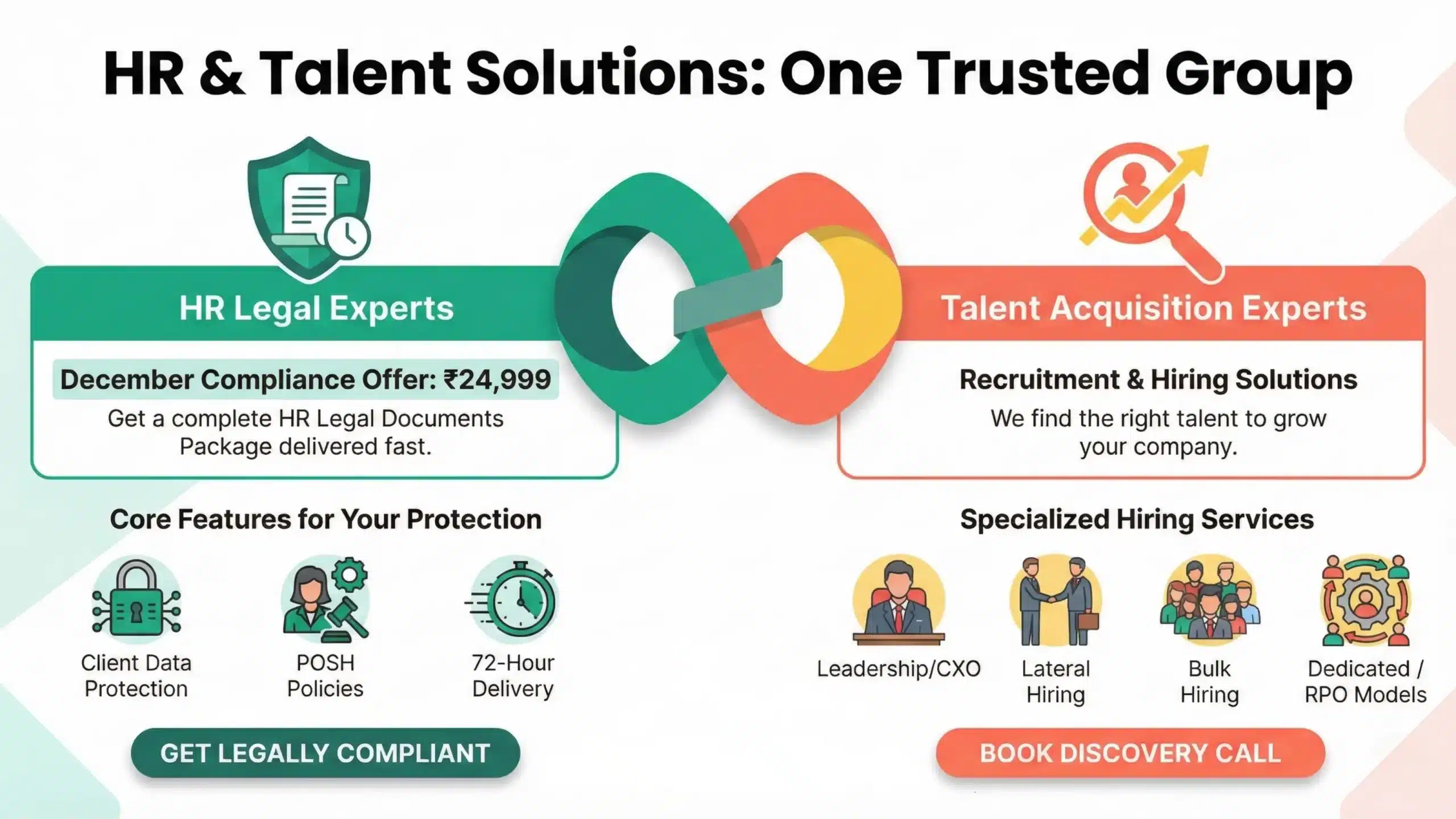Do you ever feel like you’re always hiring?
This constant cycle of recruitment and turnover is a classic sign of poor Attrition Management. You spend countless hours crafting job descriptions, sifting through resumes, and interviewing candidates. Just when you think you’ve found the perfect fit, another key player resigns, and you’re back to square one.
This scenario is all too common for businesses today. A 2023 report by a Indeed found that nearly 60% of workers are open to new job opportunities, creating a highly competitive talent market. The pain of losing an employee is even sharper when it’s one of your top performers.
Research shows that replacing a single employee can cost 16-21% of their annual salary. This employee attrition takes their skills, experience, and institutional knowledge with them, incurring additional costs beyond recruitment.
The high attrition rates can be incredibly frustrating and demoralising. It disrupts your team dynamics, slows down progress on projects, and can even damage your company culture. But here’s the good news: you don’t have to surrender yourself to this cycle. Simply learn the concept of Attrition meaning in hr and learn how to manage it effectively.
By understanding the root causes of employee attrition and implementing effective retention strategies, you can break free from the hiring treadmill and build a stable, high-performing team.
This article will be your guide, packed with data, actionable strategies, and expert insights from Corporate Stalwarts, your leadership hiring expert in India.
Table of Contents
ToggleWhat is employee attrition? Definition, impact, and why it matters.
In HR terms, attrition refers to the gradual reduction of your workforce when employees leave voluntarily and their positions remain unfilled. Simply put, employee attrition is the process of people exiting the organisation, either for better opportunities, personal growth, or relocation, without immediate replacements.
While some level of staff attrition is natural, excessively high attrition rates are a sign of deeper issues. Employees who feel disengaged, undervalued, or stagnant are more likely to move on.
How to calculate your employee attrition rate
To effectively manage attrition, you first need a clear, quantitative measure of the problem.
Use the following standard formula to calculate your employee attrition rate over a defined period, quarterly or annually:
For example, if 15 employees left during a year and your average headcount were 120, your attrition rate would be:
(15÷120)×100=12.5%
A rate above 20% is often considered high in most industries. It signals potential retention issues such as disengagement, leadership challenges, or cultural misalignment.
While comparing rates, always benchmark against your industry average; what’s high in one sector might be normal in another. The key is consistency and early detection. If your rate is steadily climbing, it’s time to dig deeper into why employees are leaving.
Key tools for attrition root cause analysis
Once you’ve measured your attrition rate, the next step is to understand why it’s happening. These tools help you identify real reasons behind employee exits:
1. Exit interviews
Exit interviews reveal what drives people to leave. Analysing this feedback helps you spot patterns in pay dissatisfaction, leadership gaps, or limited growth opportunities.
2. Stay interviews
Talk to your best performers before they consider leaving. Stay interviews uncover what keeps them engaged and highlight early warning signs you can act on.
3. Employee surveys
Regular engagement surveys measure morale, workload, and culture. They help detect disengagement long before it turns into attrition.
How high attrition rates could be a red flag for your business:
It impacts productivity: There’s often a 30–35% drop in productivity when a key employee leaves. New hires take time to adjust, delaying deliverables and reducing team efficiency.
It drains knowledge: Every attrited employee takes along company knowledge, client relationships, and best practices, things that can’t be easily replaced.
It decreases morale: Frequent departures create uncertainty, affecting team spirit and trust in leadership.
It costs money: The costs of recruitment, onboarding, and lost productivity add up quickly, making uncontrolled employee attrition a silent profit killer.
Employee turnover vs. attrition: Understanding the departures
Both turnover and attrition refer to employees leaving an organisation, but the difference lies in how and why they leave.
Employee turnover includes both voluntary and involuntary exits. It covers situations like:
-
Resignations: Employees leave for new opportunities, higher education, or relocation.
-
Terminations: The company ends contracts due to performance issues, redundancy, or misconduct.
-
Layoffs: Roles are eliminated because of restructuring, downsizing, or economic reasons.
Employee attrition, on the other hand, refers only to voluntary departures, when employees choose to leave on their own. Common reasons include:
- Seeking a new challenge or career advancement
- Dissatisfaction with compensation and benefits
- Unhealthy work-life balance
- Lack of engagement and motivation
- Poor company culture
Why does understanding the difference matter?
Understanding this distinction is key.
High turnover often points to structural or leadership issues, while high voluntary attrition signals disengagement, cultural misfit, or lack of recognition.
Recognising which one you’re facing helps you design more precise retention strategies rather than applying one-size-fits-all solutions.
The root causes of employee attrition
Well, employees leave. There’s no big deal in that. Some opt for growth options, and some do so for personal reasons. But if it’s happening frequently, then it’s an issue.
So, let’s step into their shoes and understand the real reasons behind high attrition.
Stagnation and disengagement
Feeling stuck in a dead-end job with limited growth potential provokes disengagement and a desire for new horizons.
Uncompetitive compensation & benefits
Feeling undervalued financially or in terms of the benefits offered can be a major demotivator, prompting them to explore positions that offer a better deal.
Toxic culture
Feeling disrespected, unsupported, or unheard can significantly impact job satisfaction.
Work-life imbalance
Long hours, inflexible schedules, or a lack of support for work-life balance can lead to burnout and a desire for a more accommodating employer.
Ineffective leadership
Employees crave leaders who inspire, provide guidance, and recognise their contributions.
Lack of recognition & appreciation
Feeling like their hard work goes unnoticed can be incredibly demotivating.
Burnout
High workload and unrelenting pressure can lead to burnout, pushing employees to seek less stressful environments.
Misaligned values
A clash between personal and company values can create a sense of dissonance and unhappiness.
Poor communication & transparency
Feeling out of the loop or like information is withheld creates distrust.
Limited feedback & development
Employees crave feedback and opportunities for professional development to avoid feeling stagnant.
Proven attrition management strategies to keep your top talent
We’ve explored the world of attrition, its impact, and the reasons why employees leave. Now, let’s dive into actionable strategies to combat it and retain your top talent.
Get started checklist for reducing attrition
1. Invest in your people
– Skill gap analysis: Conduct a company-wide skills gap analysis to identify areas where employees need development.
– Develop a training calendar: Based on the skills gap analysis, create a training calendar with relevant workshops, online courses, or mentorship programs. Prioritise high-impact skills and offer them at convenient times.
– Offer training and development programs: Consider offering training and development programs for relevant certifications or educational pursuits.
2. Build a positive work environment
– Conduct surveys: Implement regular surveys to gather employee feedback on workplace culture, workload, and satisfaction.
– Recognition & rewards program: Establish a program for recognising employee achievements, both big and small. This could include public recognition, bonuses, or additional paid time off.
– Flexible work options: Offering flexible work arrangements like remote work options, compressed workweeks, or flexible start and end times.
3. Empower your workforce
– Delegate & empower: Delegate tasks effectively and empower employees to make decisions within their roles. This fosters trust and ownership.
– Regular performance reviews: Conduct regular performance reviews that provide constructive feedback and highlight areas for improvement.
– Career development discussions: Schedule regular career development discussions to understand employee aspirations and explore potential growth opportunities within the company.
4. Invest in the future
– Career path mapping: Develop career path maps for different roles within the company. This provides employees with a clear understanding of potential career progression within your organisation.
– Mentorship programs: Implement a formal or informal mentorship program to connect senior employees with junior colleagues for guidance and support.
– Promote well-being: Offer wellness programs like gym memberships, stress-management workshops, or Employee Assistance Programs (EAPs) to promote employee well-being.
Retention isn’t a one-time fix. It’s an ongoing commitment to your employees. You need to find the root causes of attrition to build a workplace that your top talent will be excited to be a part of, ultimately driving your business success.
What’s the value of partnering with a recruitment expert in attrition management?
Attrition doesn’t just hurt; it drains energy, money, and momentum. Partnering with a recruitment expert like Corporate Stalwarts gives you access to data-backed hiring insights, market intelligence, and retention-focused strategies.
We help organisations identify the right talent who are not only skilled but also aligned with your company culture, reducing voluntary attrition and improving overall retention.
From screening for culture fit to forecasting attrition rate trends, our team helps you strengthen your workforce stability.
Takeaway
Employee attrition is a silent thief, stealing productivity, morale, and profitability. But with the right attrition management strategies, you can turn it around.
Understand the reasons for attrition, empower your managers to learn how to control attrition as a team leader, and focus on proactive retention efforts.
If your best people are leaving, let’s fix it with Corporate Stalwarts before it becomes a pattern.

Corporate Stalwarts is a trusted recruitment firm with 20+ years of expertise in executive search and leadership hiring.
We’ve placed 10,000+ candidates across 600+ companies in FMCG, Manufacturing, IT, Pharma, and more. Our 1M+ candidate pool and 48-hour turnaround enable fast, high-quality hiring solutions.
We help businesses build high-performance teams with precision, speed, and industry expertise.










